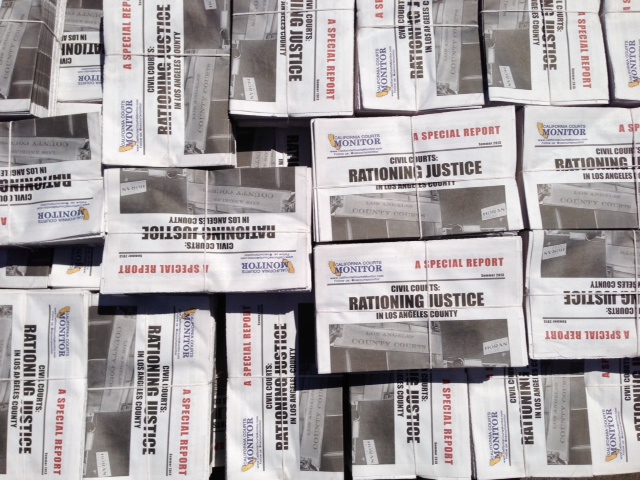Newest ‘Good News’ Budget? Not For Justice System
Law School Offers ‘Practice’ Courtroom For Holding Court
Profile of Court Fees Increases Amid Budget Crisis
Allowed uses also shift. That court fee, for example, was initially earmarked for security but can now be used for administration. It will be an important issue in the upcoming crunch-time debates over what funding the legislature actually finds to address the growing courts crisis.
Doing The Math, Losers Take Note Of New Court Funding Scheme
Winners, Losers Likely As State Revises Court Funding
Worried About Costs, Imperial County Wants In On Court Cuts Discussions
The lack of public comment into the ongoing Los Angeles County Superior Court reorganization has been one ongoing complaint about the changes, and now the Imperial County Board of Supervisors is “demanding” to be in on discussions, according to the Inland Empire Press. Along with other worries, the supervisors argue that some cuts might save the courts money but end up costing the county additional money for transportation and other services.
Court funding: Politics large and small
Article from CCM’s Special Report – CIVIL COURTS: RATIONING JUSTICE IN LOS ANGELES COUNTY
A few weeks after a big downtown rally against Los Angeles Superior Court reorganization, a middle-aged man who had attended the protest walked into a Starbucks next to the Stanley Mosk Courthouse and ordered an elaborate latte concoction.
“It would be different,” he mused as they prepared the drink, “if the judges were elected.”
He must have been thinking of federal court, because the Superior Court judges held up as out-of-touch 1 percenters at the protest ARE elected, albeit in the most unheralded races anyone might imagine. That near-total lack of political interest is a key reason that this “special report” is a long-form accounting of what amounts to simple political Darwinism.
Looking for ‘literature,’ finding civic revolt
By Sara Warner, from CCM Special Report
It wasn’t supposed to be like this. After some time Back East, I was moving back to California where I’ve lived nearly all of the past 17 years. When talk turned to a courts website last year, our pretensions were mostly literary: we wanted www.californiacourtsmonitor.com to celebrate “the writing” about justice, like that you get from Associated Press Special Correspondent Linda Deutsch or maybe even less known voices like James Preston Allen, the publisher of San Pedro’s “Random LengthNews.” (Not, by the way, that Mr. Allen is likely to care all that much.)
It seemed logical enough. It was a good project that meshed nicely with my day job as development director for a non-profit legal foundation. Also, I grew up with the Law (capital “L” in our house). My grandfather was a famous lawyer and my grand uncle was a Federal Court judge. Who knew we would find a civil courts system in what amounts to full-on revolt?
CCM issues first ‘special print report’
Report: Services Slashed, Trials Delayed As Court Cutbacks Take Hold
The story offers some highlights: In San Francisco, paying a traffic ticket can now take up to four hours, and filing a lawsuit can consume nearly three hours, the report said. In Sacramento, window services have been slashed by more than 75%, prompting fights in lines, according to the committee. Getting a trial in a traffic matter in San Diego requires at least a five-month wait, the survey found, and court closures have forced some San Bernardino residents to drive up to 175 miles one way to attend to a legal matter. Record-filing has slowed across many counties and created backlogs, the report said.
Read the latest here.

